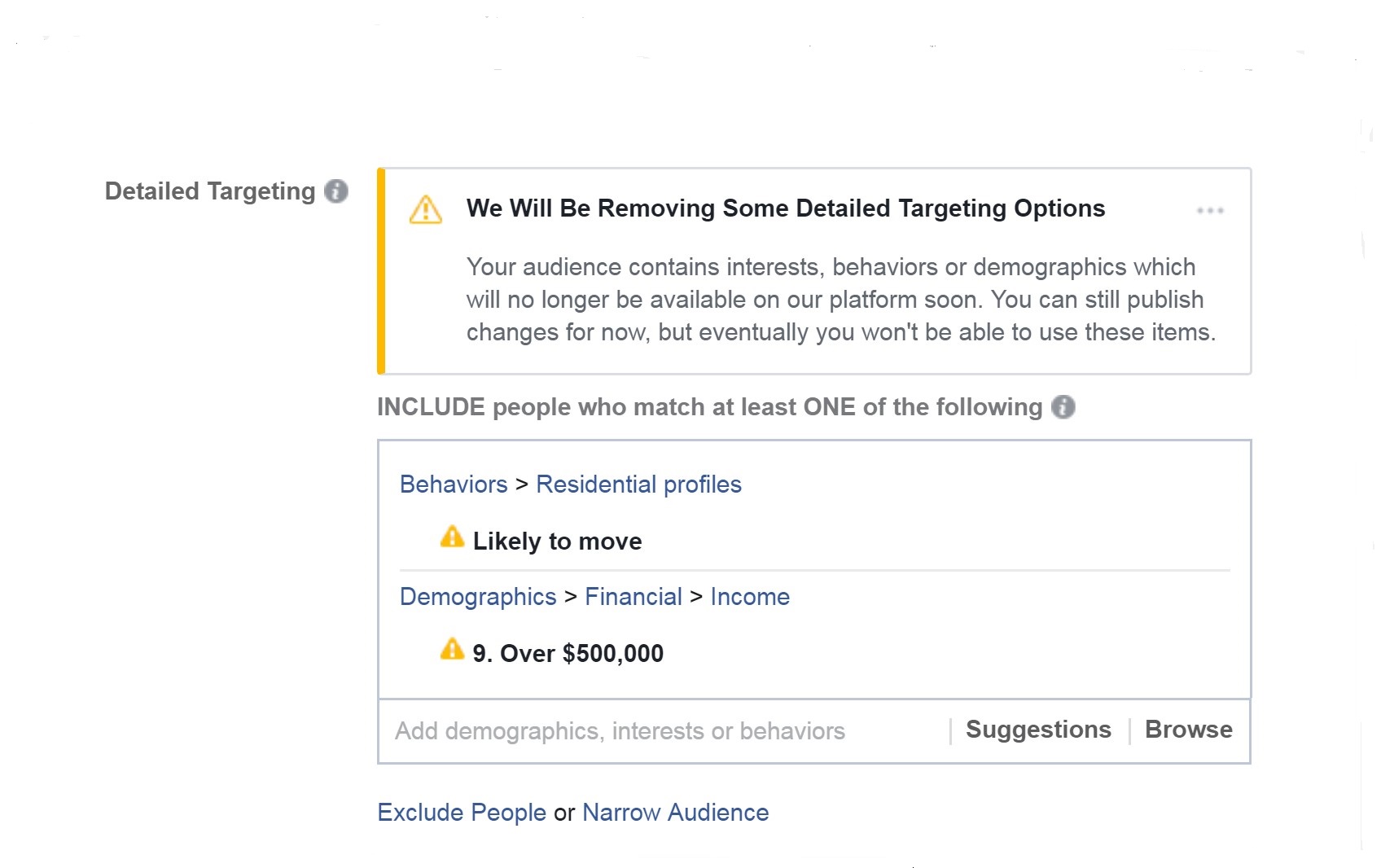Facebook is the “it” child for reaching your highly selected target audience with a low ROI. And if it isn’t, well, frankly put, it should be. Recently, though, Facebook has gone through some growing pains due to the ways of obtaining sensitive information and has made changes to how advertisers can target users.
Detailed Facebook Targeting Changes
If you’re like me, your detailed targeting section of your ad set is your best friend. With a couple of clicks of a button or a few words, your audience is tailored with an intent-based focus — the best kind of prospects! But will that soon change?
Simply put, yes. Some targeting options (and some of my favorites) are a thing of the past. Don’t freak out just yet, let me explain Facebook targeting a little more, then we can discuss solutions.
There are three types of targeting: behavior, demographics and interests. Within these three types of targeting are categories that are obtained by a third party or by a person’s Facebook profile.
Partner categories, which are the categories obtained by a third party, include net worth, home type, charitable donations, plus many more. Facebook will eliminate these partner categories as part of their new marketing updates and will rely on self-reporting categories in a user’s Facebook profile.
New Detailed Targeting Adaption
At Creating Results, we’ve often targeted by location, age and purchasing power on top of interests. It’s easy to say we have a new product that costs $X amount of dollars, so let’s remove people who aren’t of age and who won’t qualify financially. So how do we accomplish this without partner categories?
Facebook offers audience insights, which is a great tool to help you target the right audience. After adding pre-qualifiers such as location and age, which will help narrow your audience, begin to focus on other behaviors and preferences that are aligned with your target prospect, such as affinity for upscale brands, activity interests, publications, education level and job title. All these targeting options can help you hone in on the right prospect audience in the absence of third-party data.
In addition, senior living and age-restricted real estate communities also have amenities that help to draw in prospects. In speaking with Facebook, they recommend targeting based on these amenities, like golf, to help narrow your audience further. Add all the amenities that your community has to offer, like hiking and fishing for communities with a focus on natural amenities. (Tip: Just make sure to only require that your audience match one of the interests you’re targeting and not all of them.)
Facebook Marketing Best Practices
Because nothing is black and white in Facebook targeting, finding your best audience will take some AB testing and time. A few best practices for finding your audience:
- Always utilize AB testing for one If you are testing for targeting parameters, don’t change your call to action, picture, messaging, etc. Change only your targeting if your goal is to learn who is most likely to act on your ads.
- If your ad’s learning period is complete, create a new ad set Changing your ad set after the initial learning confuses Facebook’s algorithm and the ad set will not reach its full potential.
- Save your audience insights within Facebook. Saving your audience insights helps you to plan for future campaigns and allows you to track how your audience evolves.




